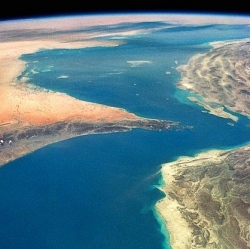
NASA’s decision to rely on private companies like SpaceX to resupply the International Space Station has possibly saved billions of dollars. The study, breaks down the numbers for NASA’s investments in various commercial spacecraft to give an “apples to apples” comparison of costs.
In 2006, NASA decided to change how it sends supplies to the orbiting lab: instead of using government-operated rockets like the Space Shuttle, the agency would get commercial companies to do it instead. NASA helped fund the vehicles’ development and today, the space agency contracts two companies — SpaceX and Orbital ATK — to periodically resupply the ISS. As part of the Commercial Cargo Program, each company uses their own rockets and cargo capsules for the job: SpaceX sends supplies inside its Dragon capsule on top of its Falcon 9 rocket, while Orbital ATK uses its Cygnus capsule, which can fly on the company’s Antares rocket, or the Atlas V rocket made by the United Launch Alliance.
When the project launched, it was hailed by NASA’s administrator, Mike Griffin, as a more cost-effective way to send cargo to the ISS. Today’s study shows he was right: these partnerships have been a huge bargain. The programs have cost billions of dollars less for NASA — and taxpayers — than comparable government-run vehicles.
The information is a big asset to those who want NASA to partner with the private sector more. These days, there are two competing factions in the space community arguing over how NASA should do business. Traditionalists want NASA to continue making spacecraft like it has always done: by developing vehicles through established contractors. This way, NASA heavily oversees the development process and owns the vehicles once they’re complete. However, these contracts are usually very pricey, which is why many experts argue NASA should instead partner with commercial companies. Through this method, the space agency instead buys a service from a company, like SpaceX, but it doesn’t own the vehicles in the end.
The study, presented with no fanfare by NASA in September, shows that the second method might be the most cost-effective. The overall price tag for NASA to help develop the Dragon cargo capsule was about $307 million, while the space agency’s cost for the Cygnus capsule was $251 million, according to the study. Compare that to the Orion crew capsule, which NASA is working on to take people into deep space: NASA is expected to pay a whopping $19.47 billion to make Orion, the study says. To be fair, Orion is a much more technically challenging spacecraft than the cargo vehicles, as it’s intended to go to deep space and not lower Earth orbit where the space station resides. And since it’s supposed to carry people instead of just cargo, it has unique instrumentation, such as life-support systems.
However, the NASA study also looked at the development costs of much more comparable vehicles to Orion, which are being created for the Commercial Crew Program. SpaceX is creating a crewed version of its Dragon capsule, while Boeing is developing an entirely new vehicle called the CST-100 Starliner to ferry astronauts to and from the space station. Neither of those vehicles are complete yet, but the crewed Dragon is projected to cost NASA $2.2 billion, while Starliner will cost $3.27 billion. That’s still mighty cheap compared to Orion. And the operational costs tell the same story: the price tag to launch a crewed Dragon, excluding the cost of the rocket, is estimated to be around $308 million for NASA, with the Starliner costing $418 million. Comparatively, Orion will cost nearly $1 billion to fly each time.
It’s not just a matter of money, of course: Orion’s development benefits many of the commercial companies indirectly. For instance, much of the data that NASA gets from its tests of Orion are given to SpaceX and Orbital ATK, which then use that data to perfect their own vehicles. That allows commercial companies to skip doing some tests on their own.
However, it’s clear that partnering with commercial companies certainly has a financial benefit, and the cost of NASA’s programs has been a contentious topic for a while now. Yesterday, during a hearing, NASA came under fire by members of Congress, who criticized the agency for delaying, once again, the first flight of its next big rocket, the Space Launch System. The SLS and Orion — which are being built through traditional pricey contracts — has cost NASA around $3 to $4 billion each year to develop, and it probably won’t fly until 2020. Members of the House Science Committee made it clear that more delays from such a costly program will have consequences.
“It is very disappointing to hear about delays caused by poor execution when the U.S. taxpayer has invested so much in these programs,” Rep. Lamar Smith said at the hearing. He later added: “The more setbacks SLS and Orion face, the more support builds for other options.”
